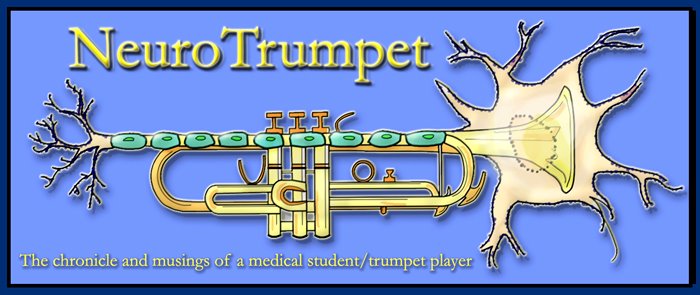Medical students only get one real summer vacation in the course of their education: the break between years 1 and 2. Hence, this is my one and only official summer vacation (of any meaningful length) for the next four years.
Oh, but there’s a catch. I’m actually working through the vast majority of the summer, principally because residency programs frown upon excessively leisurely medical professionals-to-be. In order to secure a better residency, most medical students therefore use this “break” as an opportunity to engage in salient activities pursuant to their future careers. These include finding clinical internships, working at a medically-oriented camp for underprivileged high school students, heading overseas to provide medical care in poor rural areas or becoming involved in medical research programs. Given my history of neuroscience research in affective disorders and schizophrenia, I decided upon the latter.
I received a Roessler Grant to conduct clinical research under Dr. Doug Scharre, head of the Department of Cognitive Neurology here at OSU. He developed a powerful, useful clinical screening test for mild cognitive impairment and early dementia called SAGE (Self-Administered Gerocognitive Exam). I can’t describe my work in too much detail since my research hasn’t been published yet, but essentially I am establishing normative data and performing statistical comparisons between SAGE and MMSE (Mini Mental Status Exam) scores in order to implement SAGE as a community-based screening tool.
So, what is dementia anyway, and why is a screening tool important? Dementia is an umbrella term for brain disorders that lead to persistent loss of intellectual abilities in memory, language, personality/emotion, visuospatial ability and/or cognition. Alzheimer’s Disease represents about half of all dementias, the pathophysiology of which involves accumulations of two kinds of maladaptive proteins in the brain: extracellular aggregations of an abnormally-folded protein called beta-amyloid, and intracellular (within the neuron) clumps of hyperphosphorylated tau protein. Other causes of dementia can be vascular in nature, toxic or metabolically-induced, related to depression, hydrocephalic, involve Lewy-bodies (as in Parkinson’s) or manifest from varieties of cortical degeneration.
Mild Cognitive Impairment (MCI) represents a transition state between cognitive decline associated with normal aging and dementias. There are potential benefits for the early recognition of MCI given that treatment in the beginning stages may improve the course of the disease. Many barriers prevent the detection of the early stages, such as poor insight by the patient and subtleties in cognitive impairment that are often overlooked during routine examinations. Although several highly specific and sensitive cognitive screening tests exist, they are often poorly reimbursed, time-intensive and cumbersome for healthcare personnel resources. SAGE was developed to combat these hurdles by serving as a sensitive, inexpensive, rapid and easily administered screening tool for MCI and early dementia.
70% of my job involves various forms of data entry and analysis, and the remainder includes administering SAGE in community settings and shadowing Dr. Scharre in order to become familiar with dementias in a clinical setting. Observing demented patients and witnessing Dr. Scharre’s interaction and examination is very illuminating. For instance, patients with MCI seem perfectly normal until clinical cognitive tests reveal subtle underlying deficits. As an example, an individual might give “concrete” answers to questions rather than “abstract” ones: when asked how a train and bicycle are alike they respond that they both have wheels (they are both transportation devices); or when asked how a tulip is like a rose, they note that they both have petals (the abstract answer is that they are both flowers). Probably the most common manifestation of MCI are memory impairments, but I think this subtle deterioration from abstract to concrete thought processes is the most interesting.
I took a week off from this research in order to have a “real” vacation over the 4th of July. Unfortunately, the bulk of the time spent in Maryland visiting friends and family occurred during the worst heatwave since 2006. I was hoping to get a tan, but I couldn’t tolerate even 5 minutes in the sun lest my skin fry like bacon and my blood turn to gas. I’ve resigned to staying pasty for the summer which, I suppose, is better in the long-run given my genetic predisposition toward skin cancer. Nevertheless, it was great to see the fam’ and visit with friends; I’m already wishing I were back there again. Minus the hot/humid weather and egregious traffic, it’s bliss.
I’m trying to squeeze as much leisure from this summer as I can despite my research obligations. I just finished Carl Sagan’s outstanding book, “Demon Haunted World,” and next I will read a book about Henrietta Lacks (thanks, Aunty!) and “Surely You're Joking, Mr. Feynman!” (thanks, Vania!). I’ve also found new television obsessions, including “It’s Always Sunny in Philadelphia,” “Modern Family,” “Work of Art,” and soon I will hook myself on “House” and “Six Feet Under.” There’s a month left before school starts, so I better get crackin’. I figure that if I O/D on TV now, I won’t miss it so much when I’m drowning in schoolwork. Finally, while I’m on the topic of entertainment, I’ll take this time to recommend what I believe are the two best films of the summer: “Toy Story 3” and “Inception.” If you haven’t seen them, get your ass to the theater.
